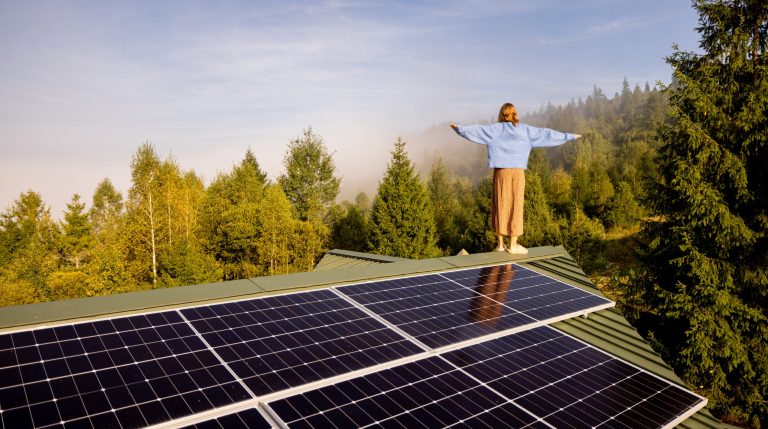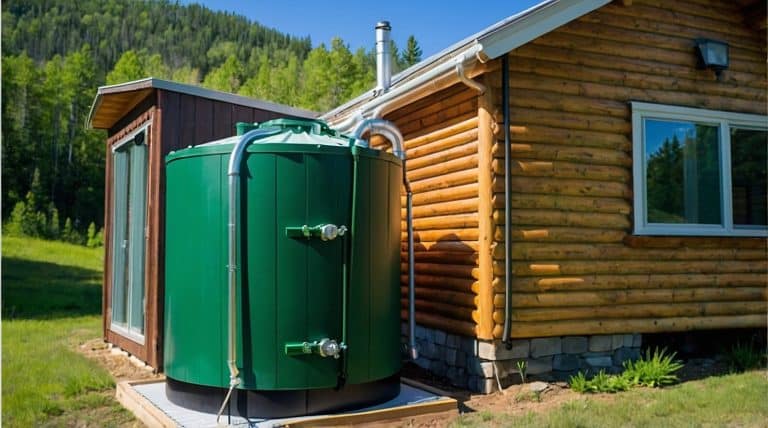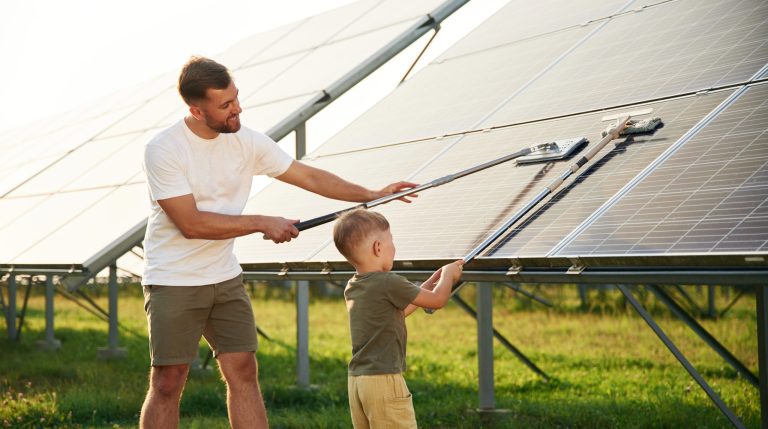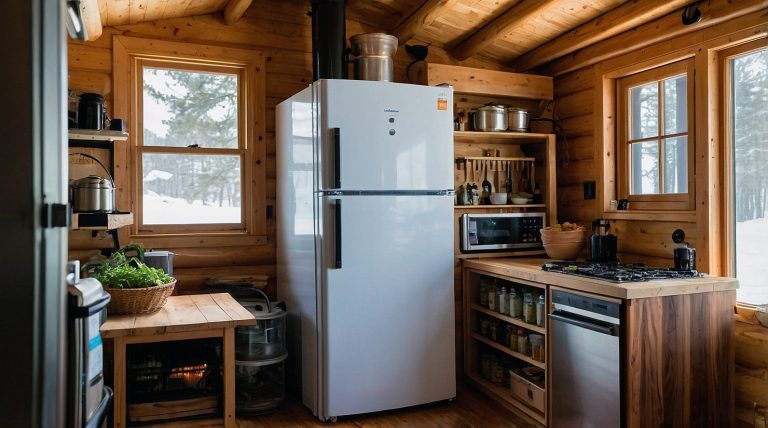Exploring Off Grid Heating: The 6 Best Sustainable Options
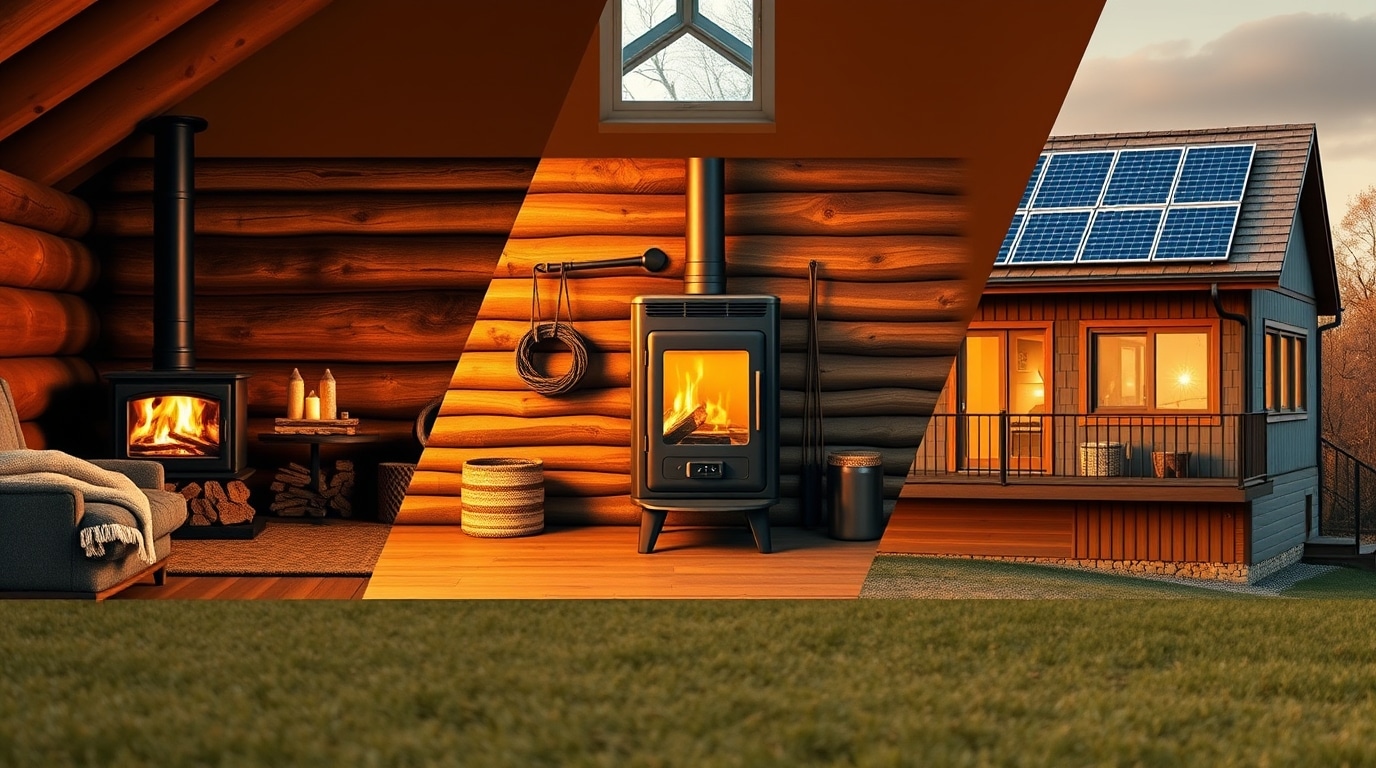
Living off-grid means finding creative ways to meet basic needs, especially heating. Choosing the right off grid heating system can feel overwhelming. But with some planning, you can stay warm no matter how far you are from the power company. This comprehensive guide explores effective off grid heating methods.
From harnessing renewable resources like solar energy to relying on tried-and-true methods such as wood-burning stoves, off grid heating offers diverse solutions to match your lifestyle and location. Understanding your options will help you create a system that is reliable, sustainable, and tailored to your unique needs.
Maximizing Efficiency for Off Grid Heating
Maximizing your home’s efficiency is crucial before choosing an off grid heating system. This reduces the heating system load and saves on fuel costs, whether you’re using traditional wood or renewable energy sources. Good efficiency also means less regular maintenance will be required for your off-grid heating system.
One key strategy is to design your home with a southern orientation to take advantage of passive solar heating, which can naturally keep houses warm during the day. Combine this with proper insulation, weatherproofing, and sealing gaps to prevent heat loss. By optimizing your home’s structure and reducing reliance on active heating sources, you can ensure your off grid heating setup operates more effectively and economically.
Insulation and Sealing
Start by ensuring your walls, floors, and roof are properly insulated. This prevents heat loss and keeps cold air from entering your home. Seal gaps around windows, doors, and outlets to minimize drafts that can significantly impact your off grid heating efficiency.
Consider upgrading to energy-efficient windows or adding thermal curtains to retain more heat. Insulated skirting around the base of your home can also help prevent cold air from creeping in, especially in areas prone to extreme weather. Proper insulation not only reduces the workload on your heating system but also supports a more sustainable and comfortable off-grid lifestyle, even as climate change alters seasonal patterns.
Window and Door Upgrades
Upgrading to double- or triple-paned windows can drastically improve insulation compared to single-pane models. These windows are designed to reduce heat transfer and help maintain a consistent indoor temperature. Similarly, well-sealed and insulated doors can significantly reduce drafts that make heating less efficient.
Adding storm windows or weather stripping can further enhance the energy efficiency of your home. Such improvements are particularly beneficial for off grid heating setups, as they reduce the amount of fuel or energy your heaters require to maintain a warm environment, whether you’re using a wood stove, grid solar, or other methods.
Thermal Mass
Incorporating materials with high thermal mass, such as stone, brick, or concrete, into your home design can make a big difference in off grid heating. These materials absorb and store heat during the day, especially if positioned to benefit from southern orientation, and release it at night to maintain consistent indoor temperatures.
A rocket mass heater is a perfect example of utilizing thermal mass effectively. It provides highly efficient heating by storing heat in a thermal mass, which keeps houses warm for extended periods with minimal fuel. This approach complements other off-grid heating methods, offering a reliable and sustainable way to combat the challenges of colder climates.
Exploring Off Grid Heating Options
Off grid heating solutions are as diverse as the needs of those living off the grid. From wood-burning stoves to solar-powered heaters, each method offers unique benefits depending on your location and preferences. Choosing the right heating source requires an understanding of your climate, the resources available to you, and the heating demands of your home.
A rocket mass heater is ideal for colder regions, offering exceptional efficiency with minimal fuel use while providing consistent warmth. Grid solar heating systems, on the other hand, shine in sunny climates, delivering clean, renewable energy to maintain comfortable temperatures. As climate change alters weather patterns, it’s crucial to select heating methods that can adapt to these shifting conditions while remaining sustainable.
Let’s take a closer look at some of the most effective off grid heating methods, including wood stoves, propane heaters, and passive solar heating. Each option has its own strengths and challenges, so understanding how they work will help you decide which is the best fit for your off-grid lifestyle.
6 Off Grid Heating Solutions for Any Climate & Home
1. Wood Stoves: A Classic Choice
When exploring off grid heating options, wood stoves consistently prove themselves as reliable performers, offering both practical warmth and that wonderful cozy atmosphere we all love. For those considering off grid heating solutions, wood stoves make perfect sense, especially if you have access to a woodlot or free firewood – your heating costs could drop dramatically. As a cornerstone of off grid heating systems, these stoves deliver dependable heat while creating an inviting space in your home.
Before diving into wood stoves as your primary off grid heating choice, there are some important things to consider. Like any heating system, they need regular maintenance to perform their best, and proper installation is crucial for safety. While wood stoves excel at off grid heating performance, it’s worth noting that they do produce smoke, so proper ventilation is essential for maintaining healthy indoor air quality and keeping your space comfortable.
2. Pellet Stoves: Convenience and Efficiency
For those interested in off grid heating alternatives, pellet stoves offer an intriguing middle ground, using compressed wood pellets to create reliable warmth. Pellet stoves are gaining popularity because they’re more user-friendly than their traditional wood-burning cousins. When it comes to consistent off grid heating performance, models like the Englander 25-CBPAH demonstrate how far this technology has come.
Before committing to a pellet stove system, carefully consider this crucial detail: these units require electricity for their automated pellet feeding mechanisms. Your choice of energy sources will play a vital role – you’ll need reliable solar batteries or alternative power solutions to keep the system running efficiently and prevent heat loss during power interruptions.
When designing your sustainable home system, take time to assess whether your current power setup can support these additional demands. The key to a dependable heating solution lies in carefully balancing your available power capacity with your home’s heating requirements. Remember, even the most efficient pellet stove can’t perform its job without consistent electrical support.
3. Propane Heaters: Versatile Off Grid Heating
Propane heaters stand out as adaptable performers in the off grid heating world. Their large mass helps store heat effectively, making them excellent for both space heating and domestic water needs. While the initial investment might be higher than some alternatives, their ability to keep warming your space consistently makes them worth considering. However, remember that propane requires regular refills, so factor these ongoing costs into your budget.
Quality models like the Martin Direct Vent Heater demonstrate how propane systems can pose safety challenges if not properly installed. For those seeking portable options, the Mr. Heater Big Buddy has earned its reputation as a reliable choice. Whichever system you select, prioritize essential safety features such as automatic shut-off valves and two-stage auto changeover regulators – these aren’t just add-ons but crucial components for safe, reliable operation.
4. Heat Pumps: Energy Efficiency
Heat pumps represent the cutting edge of off grid heating technology, operating through heat transfer rather than direct generation. Their initial investment may seem substantial, but their large mass heat storage capabilities can significantly reduce long-term costs. When powered by solar panels or wind turbines, these systems pose safety advantages over traditional heating methods and keep warming your home efficiently regardless of fuel prices.
Consider your local climate carefully – it plays a crucial role in system performance. Air source heat pumps perform differently across temperature ranges, so understanding your region’s weather patterns is essential. Wall-mounted units require electricity but offer remarkable versatility, especially when paired with renewable energy sources.
Compared to conventional electric heat or natural gas systems, these innovative units deliver impressive environmental benefits while maintaining consistent comfort levels. Before installation, consult local experts who can evaluate your specific needs and ensure optimal performance in your climate zone.
5. Geothermal Heating Systems: Harnessing Earth’s Natural Warmth
Geothermal systems represent a pinnacle of off grid heating innovation, tapping into the earth’s remarkably stable underground temperatures. Their initial investment might seem substantial, but their large mass heating capacity and minimal operational costs make them an attractive long-term solution. While the upfront installation requires significant ground excavation, these systems keep warming your home reliably for decades with minimal maintenance.
The beauty of geothermal systems lies in their consistency. Unlike air-source heat pumps that require electricity to combat fluctuating outdoor temperatures, geothermal systems work with the steady temperatures found just a few feet below ground. Underground loops filled with heat-transfer fluid pose safety advantages over combustion-based systems, eliminating concerns about carbon monoxide or fuel storage. However, they do require electricity to operate their circulation pumps and compressors, so pairing with solar panels or other renewable energy sources creates an ideal sustainable heating solution.
When planning a geothermal installation, consider factors like:
- Your property’s soil composition and available space for loop installation
- Local drilling regulations and permit requirements
- Integration with existing energy sources or backup systems
- Professional installation requirements for optimal performance
- Long-term maintenance needs and system longevity
6. Solar Thermal: Harnessing the Sun
Solar thermal panels use the sun’s energy directly to heat water or air. This method is effective in sunny areas. It often pairs well with a backup system for cloudy days or the winter months when sufficient sun exposure may not be available.
These systems utilize solar collectors, effectively working even in low air temperatures. They need adequate hot water storage for continuous heat, especially in varying weather. Having hot water available throughout your home’s piping is vital in colder climates to prevent the pipes from freezing.
Smart Heating Combinations: Creating a Reliable System
The most successful off grid heating strategies often embrace a thoughtful combination of methods, each playing to their unique strengths. Solar thermal systems can harness winter sunlight efficiently, while a well-maintained wood stove provides that essential backup during nighttime hours or overcast days. The initial investment in multiple systems pays off through increased reliability and reduced dependency on any single heat source.
Consider how different heating methods complement each other: a small propane heater can provide quick warmth when needed, while radiant floor systems offer consistent background heat that works beautifully with heat pumps. This layered approach helps keep warming your space even in challenging conditions. For example, while heat pumps pose safety and efficiency advantages in moderate temperatures, they might require support from other heating sources during extreme cold. By integrating various energy sources and heating methods, you create a robust system that adapts to changing weather conditions and energy availability, ensuring your home stays comfortable year-round.
FAQs About Off Grid Heating
Conclusion
Choosing the right off grid heating requires planning and understanding various methods. From wood-burning stoves to geothermal heat pumps and efficient heat, solutions exist for any off-grid homeowner, even in harsh climates. Evaluate resources, climate, and budget to determine what meets your needs.
A backup off-grid heating option, whether a separate system, added insulation, or stored fuel, ensures warmth during emergencies. For those in harsh climates such as parts of Canada and for those seeking more than just a wood burning fireplace, choosing the right air source heat pump for their specific needs becomes even more important.
Many homeowners that choose a air source heat pump combine other solutions in case there is too much heat loss, especially when using the heat pump as source heat to provide both space heating and domestic hot water. Consider whether radiant heating can assist in ensuring consistent temperature when it gets particularly cold.
Be sure to consider not only the upfront cost but also the energy sources you plan to utilize and if they are sustainable over the winter days and if they provide consistent heat that meet the energy consumption and efficiency you have set. Be sure your systems work with solar powered systems too and any storage tanks if using propane. If using a traditional wood stove and in locations where permitting or certifications are needed, make sure your stove and the fuel you will be using releases heat appropriately.



